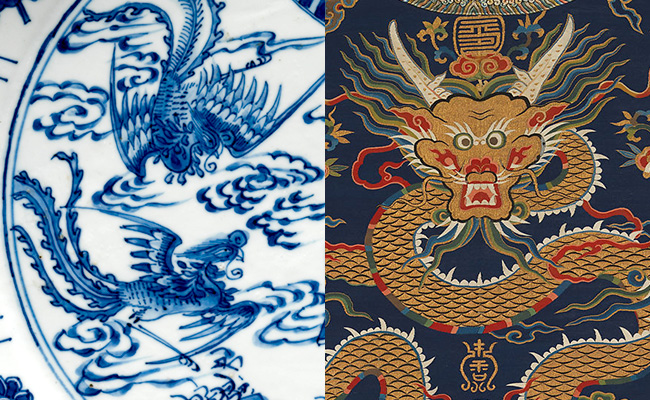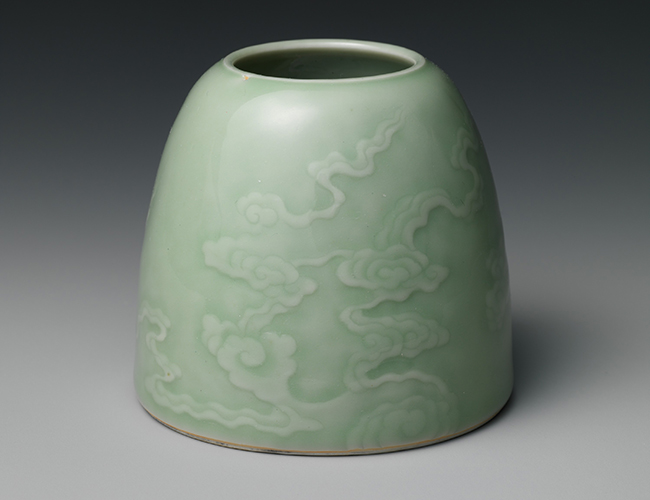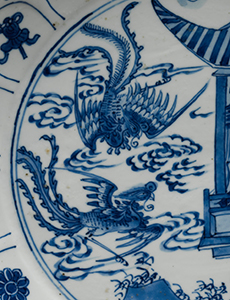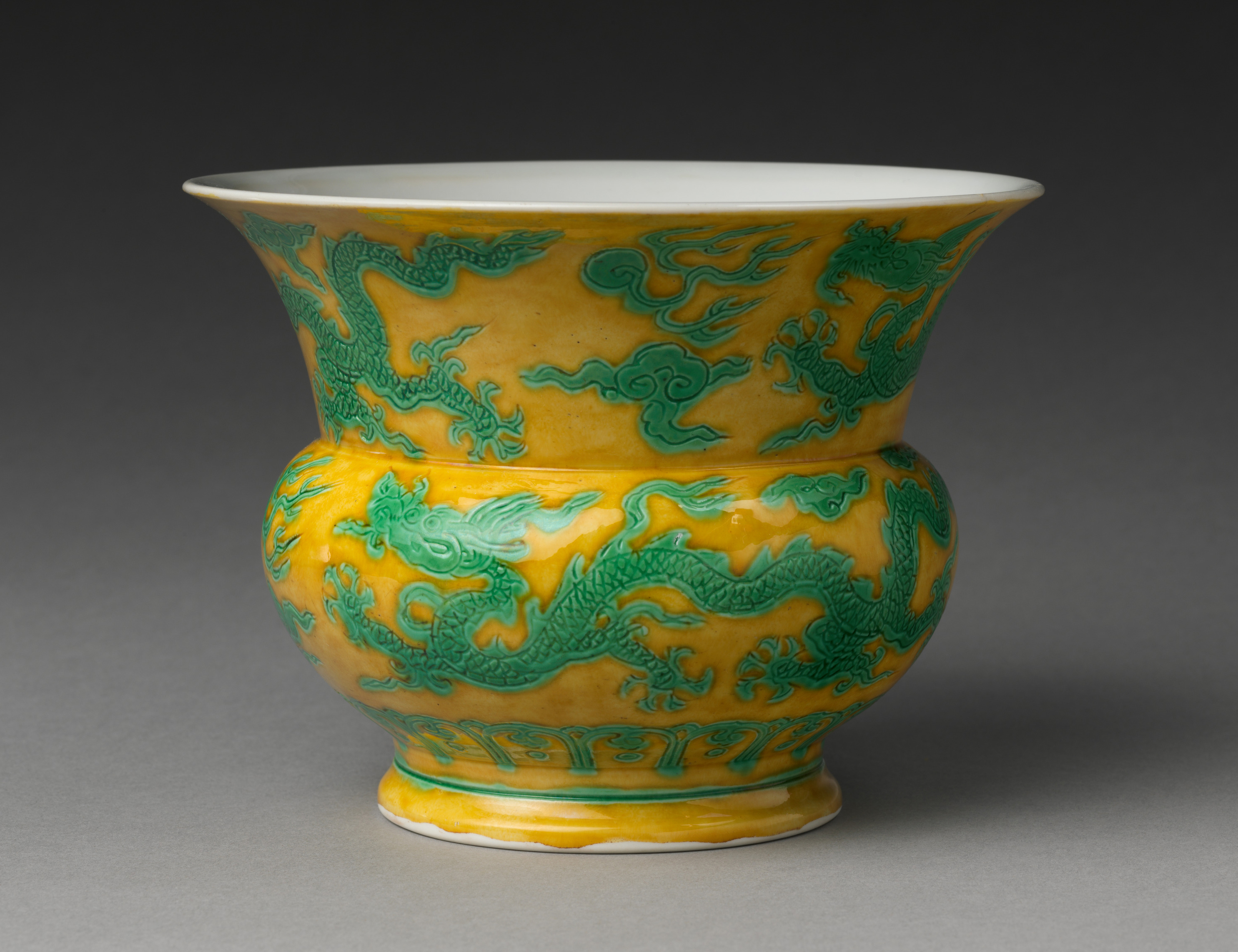
Traditional Chinese Artistic Motifs: The Skies and Heaven Beyond
Legends say that China’s traditional culture is a gift from the divine. Accordingly, many symbols and motifs found on early Chinese artifacts depict heavenly themes such as gods, fairies, and celestial creatures. And permeating these age-old designs is the traditional principle of harmony between heaven and man.
Today, these very motifs have inspired elements of Shen Yun costumes, architectural designs in the backdrops, and more. In their own intricate way, they too are a medium for telling the story of China’s 5,000 years of civilization.
Let’s take a look at some of these themes.
1. Cloud Motif

Clouds, particularly auspicious clouds, are among the most popular themes. Originally, they referred to the seven-hued clouds of Chinese mythology that portend the arrival of immortals and serve as their vehicle of transportation (think magic carpet). According to legend, these splendid clouds also protected China’s emperor, who was believed to be the Son of Heaven.
In time, “auspicious cloud” (祥雲, xiáng yún) became synonymous with a sign of good fortune. These clouds are much alluded to in poetry and literature.
The ancients believed that beyond the clouds were divine realms, deities, and heavenly fairies. Perhaps that’s why cloud motifs are so well liked—they evoke an innate feeling of enchantment with the heavens and the enigmatic world beyond.
2. Lightning and Cloud Motif
The lightning and cloud motif is a repeating geometric design. There are many variations, but as a rule the motif consists of cubic lines (representing thunderbolts) and rounded lines (representing clouds).
Throughout Chinese history, the majority of the population lived in villages and farmed for a living. Clouds and lightning herald the rain, which brings farmers a bountiful harvest. As such, the cloud and lightning motif symbolizes eternal prosperity.
3. Phoenix Motif

The phoenix of Chinese mythology is a divine bird from the heavens. It is called fèng huáng (鳳凰) in Chinese, with feng referring to the males of the species, and huang the females.
Although commonly called “phoenix” in English, they’re actually not the same as the magical creature in Western mythology that self-inflames and rebirths from its own ashes.
Taoist canons such as Classic of Mountains and Seas and The Book of Zhuangzi describe fenghuang in vivid detail. Fenghuang are the forefathers of all mortal birds. These noble birds perch exclusively on the branches of the Chinese parasol tree and drink only from sweet springs. However, they seldom appear in the human world—and that only in times of peace and prosperity.
Their likeliness has been found on a wide range of relics from as early as the Shang Dynasty (1600-1046 B.C.E.). One famous artifact is a jade fenghuang used as a burial object over three thousand years ago.
Art and craftwork since then have depicted the fenghuang more and more exquisitely, including in flight, perching, in a flock, and as a pair. When coupled with a dragon, the fenghuang represents the empress.
4. Dragon Motif

Dragon sightings have been recorded in Chinese historical annals since ancient times. Chinese paintings and sculptures of dragons across the ages are largely consistent, showing magnificent animals with horns like a deer’s, scales like a carp’s, talons like an eagle’s, and a body like a snake’s.
Traditionally, dragons were believed to be divine creatures of the highest echelon, with the ability to soar through the skies and summon wind and rain. A dragon represents the positive energy of yang, power and affluence, and is the symbol of the emperor.
In artwork and ornamentation, dragons were often adorned with jewels, and paired with fenghuang, cloud, and water motifs.
“The dragon has nine sons, and each is unique,” goes an old Chinese saying. Indeed, there are many types of dragons. For example, the panchi dragon, found on bronze ware from the Spring and Autumn and Warring States periods (771–221 B.C.E.), is a coiled dragon with no horns and a curly tail. Meanwhile, the kui dragon is a one-legged dragon with a single horn and an open mouth.
During the Qing Dynasty (1644–1911 C.E.), dragons with five talons on each claw, as well as the imposing “standing dragon,” were reserved for the emperor. Three and four-taloned dragons, however, were worn and used by the masses, by both men and women. The “ascending dragon” that’s forever soaring skyward is used to decorate the glorious Nine Dragon Pillars. In Buddhist culture, dragons make up one of the Eight Legions—divine guardians of the dharma.
There are many other traditional Chinese motifs inspired by heavenly realms:
- The srivatsa symbol represents Buddha’s great compassion and virtue.
- The magical deer-like qilin is a sign of good fortune.
- The fangsheng motif depicts the singular headpiece worn by the immortal Queen Mother of the West...
- The diverse list goes on and on.
The next time you attend a Shen Yun performance, see if you can spot some of the motifs mentioned in this article. And take a closer look at your mementos from the Shen Yun Shop, too!

